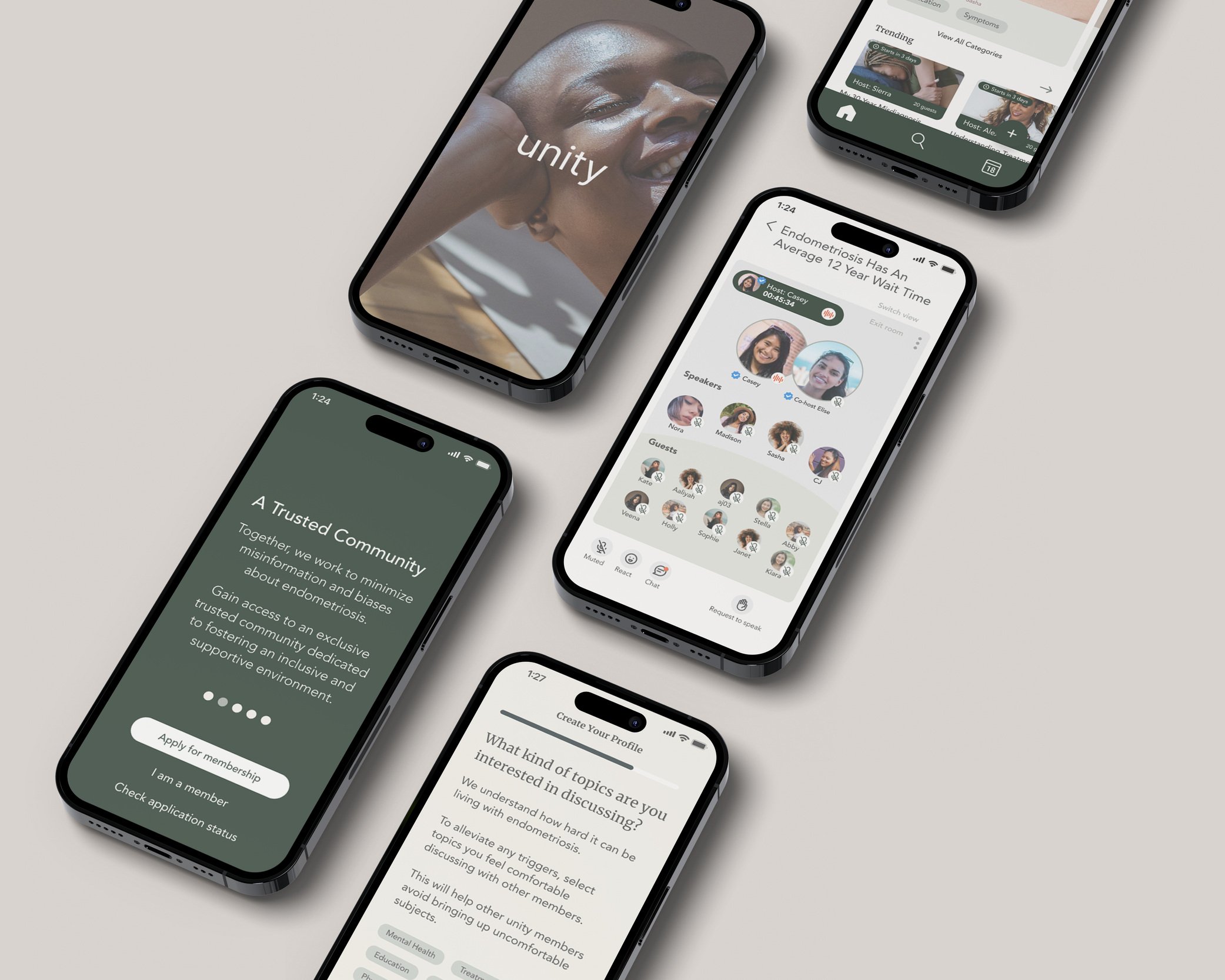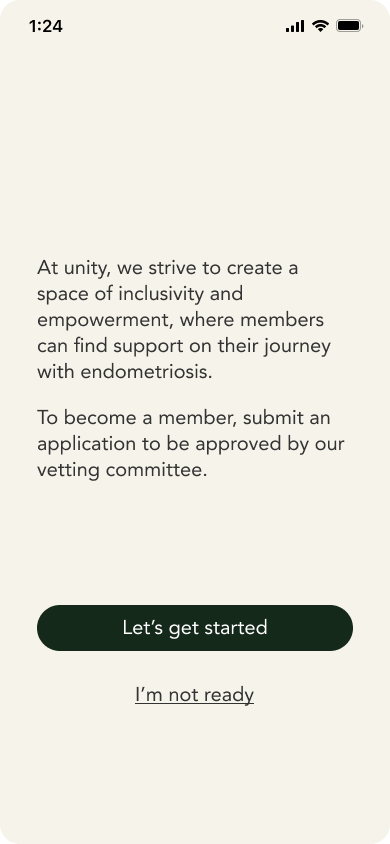unity
A community mobile app to empower, educate, and support women and people assigned female at birth (AFAB) on their endometriosis journey.
This project was created under a non-disclosure agreement. I have omitted some confidential information in this case study.Timeline
February - April 2023 (6 weeks)
Team
Michelle C., Monica C., Janelys G.
Role
I worked as a User Experience Designer along with a team of three other student designers.
My major contributions included
leading the creation of the product’s design system
building out concepts and designs for user flows
creating user stories and features
defining the project’s scope and timeline
Problem
1 in 3 women have at least one healthcare or chronic condition that impacts their lives and requires specialized care.
In particular, women and people assigned female at birth (AFAB) who struggle with endometriosis, a full body chronic inflammatory disease with autoimmune-like behaviors, have trouble finding the right specialists in a timely manner. Even after going through multiple specialists and waiting for a diagnosis which can take years, they may get misdiagnosed and receive the wrong treatments. They may even receive treatments such as hysterectomies that are irreversible and might not actually relieve their symptoms.
Going through this process is a deeply traumatizing and isolating experience for women and people AFAB. For women of color, it can be even more difficult to find the help they need because of racial bias from health care providers and lack of representation in clinical and scientific studies.
Solution
Based on our client’s business needs and the insights we gained from our client’s research, our goal was to create an exclusive community for our users living with endometriosis symptoms to share their experiences, empower each other, and provide support and education.
Vetting Process
To create a safe exclusive space, anyone who signs up or is referred to the platform must apply to be a member and be approved by unity’s vetting committee to join.
Once accepted, users will receive a notification via email or SMS depending on the user’s contact preference.
Onboarding
A user can create their profile and choose the topics they’re interested in or comfortable with discussing.
Users can also choose to take a diagnostic questionnaire to get curated care recommendations tailored to the user.
Community Engagement
The heart of unity. Users can host events or listen to discussions through live-streamed audio rooms. They also have the option of engaging in written content like blogs.
Users can also connect with others through the audio room’s live chat feature or through direct message.
Ideation
Given the large scope of this project, our team focused on two main user flows: creating a smooth onboarding experience, and engaging the community through user-created content such as live-streamed audio rooms or written blogs.
I primarily focused on creating the first half of onboarding: the vetting process. This was a major business requirement, and we needed to make sure new users could sign up without complications while maintaining exclusivity for people living with endometriosis.
User Testing and Feedback
After showing our low-fidelity prototype and testing it with potential users, we were able to get some great feedback from them. For the vetting process overall, users liked how easy the process felt.
Some notable feedback we got from our users:
One user stated that it felt like a better alternative than going to a doctor’s office.
A user appreciated having a text box to type out their answers for more sensitive and potentially triggering questions instead of marking through a checklist of items.
The process “didn’t feel like a burden” and they felt “not overwhelmed” by the questions asked.
One user noted that they had endometriosis symptoms, but were only self-diagnosed, so they were a bit hesitant to answer a few questions because she hadn’t received an official diagnosis.
By being aware of the questions asked and how we framed it, we were able to give our users a way to voice out their thoughts and experiences. This further proved that our users needed a place to feel comfortable to share their complex stories, and empowered to support others along the same journey.
Design System
As we were entering the final weeks of this project, I started thinking about how we could make it easier to collaborate on our high-fidelity prototypes. So far, our team had only worked together on the ideation of the features, but worked separately on the features we chose to work on. I decided to lead the creation of our design system so we could make a more cohesive design for our prototypes.
Final Designs
Based on the feedback we got from our user testing, I made a few changes.
Edited verbiage of the questions to be more inclusive of self-diagnosed users
Changed the form’s navigation buttons to adhere to best practices

















